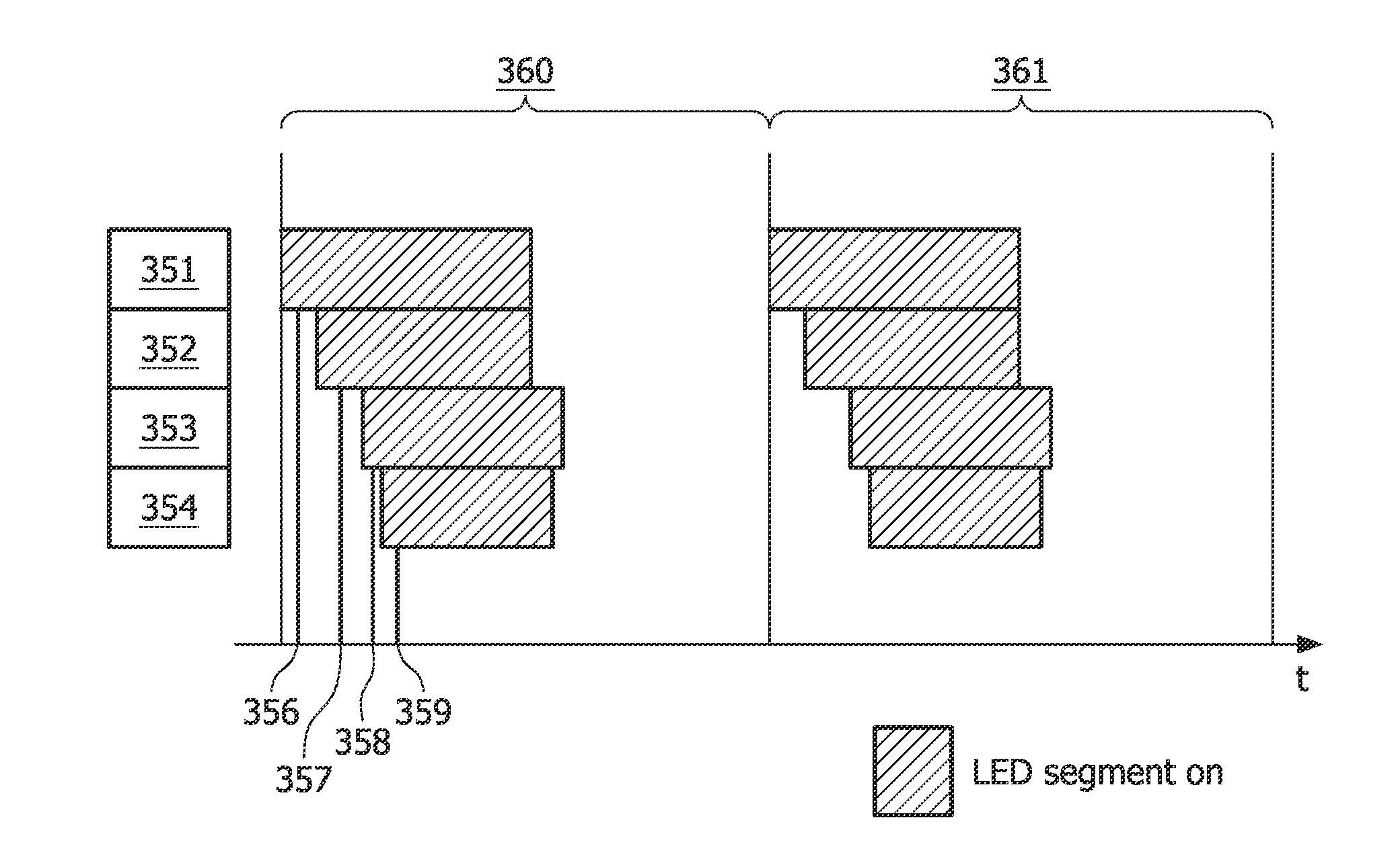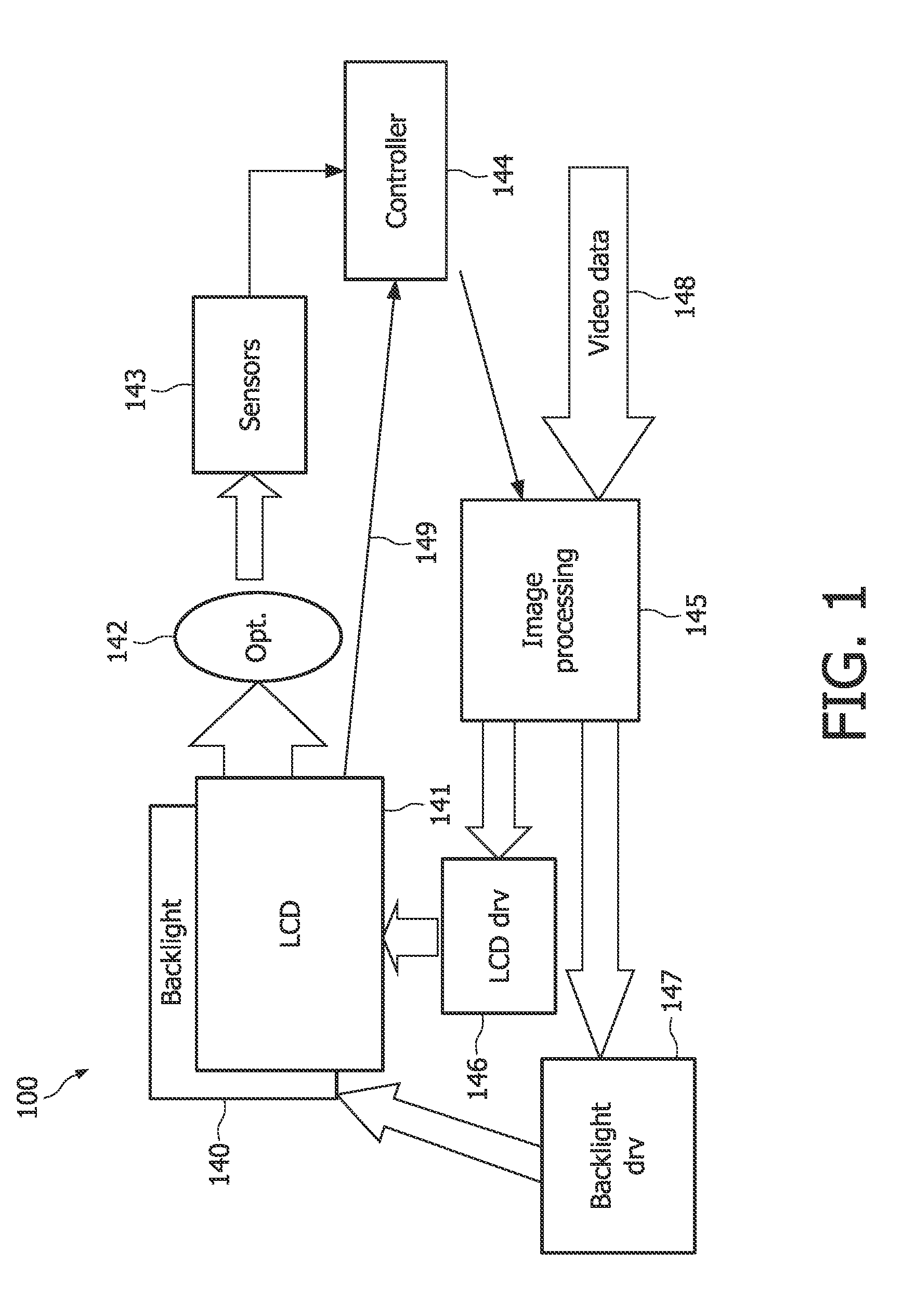Method for light emitting diode control and corresponding light sensor array, backlight and liquid crystal display
a technology of light emitting diodes and control methods, applied in lighting apparatuses, light sources, instruments, etc., can solve the problems of significant cost, significant amount of components, and inability to produce light inherently
- Summary
- Abstract
- Description
- Claims
- Application Information
AI Technical Summary
Benefits of technology
Problems solved by technology
Method used
Image
Examples
Embodiment Construction
[0039]The present invention will now be described more fully hereinafter with reference to the accompanying drawings, in which certain embodiments of the invention are shown. This invention may, however, be embodied in many different forms and should not be construed as limited to the embodiments set forth herein; rather, these embodiments are provided by way of example so that this disclosure will be thorough and complete, and will fully convey the scope of the invention to those skilled in the art. Like numbers refer to like elements throughout.
[0040]FIG. 1 is schematic diagram showing relevant components of an LCD (liquid crystal display) television 100 where the present invention is embodied.
[0041]Video data 148 is fed from a suitable source, e.g. television tuner (analogue or digital), DVD player, video game console, VCR, computer, etc. The video data 148 is received in an image processing module 145, which divides the video signal in a signal to an LCD driver module 146 and a ...
PUM
 Login to View More
Login to View More Abstract
Description
Claims
Application Information
 Login to View More
Login to View More - R&D
- Intellectual Property
- Life Sciences
- Materials
- Tech Scout
- Unparalleled Data Quality
- Higher Quality Content
- 60% Fewer Hallucinations
Browse by: Latest US Patents, China's latest patents, Technical Efficacy Thesaurus, Application Domain, Technology Topic, Popular Technical Reports.
© 2025 PatSnap. All rights reserved.Legal|Privacy policy|Modern Slavery Act Transparency Statement|Sitemap|About US| Contact US: help@patsnap.com



